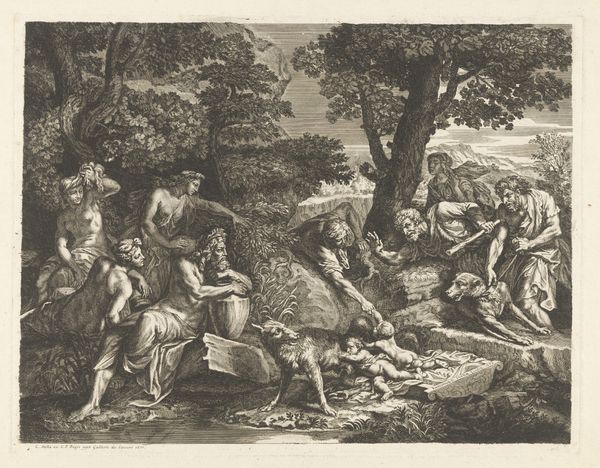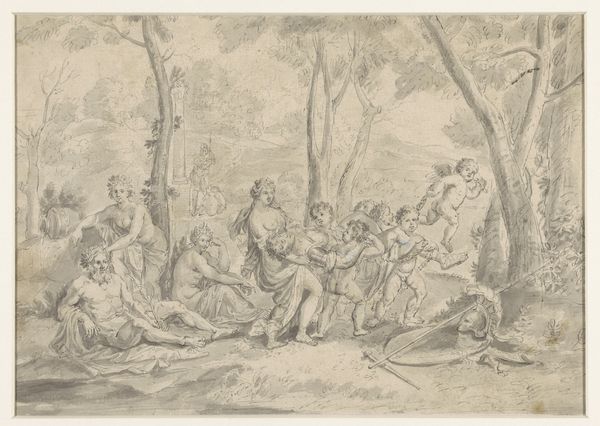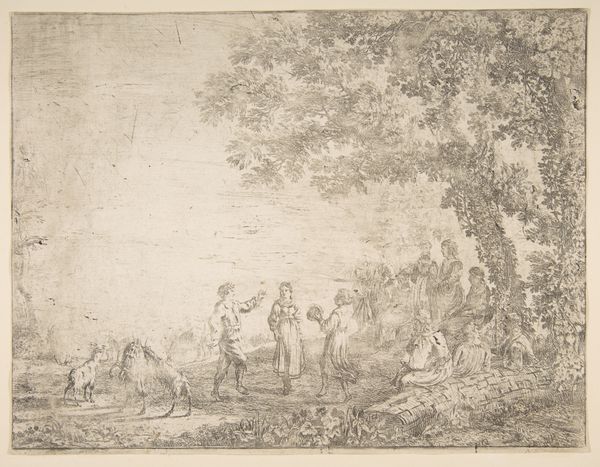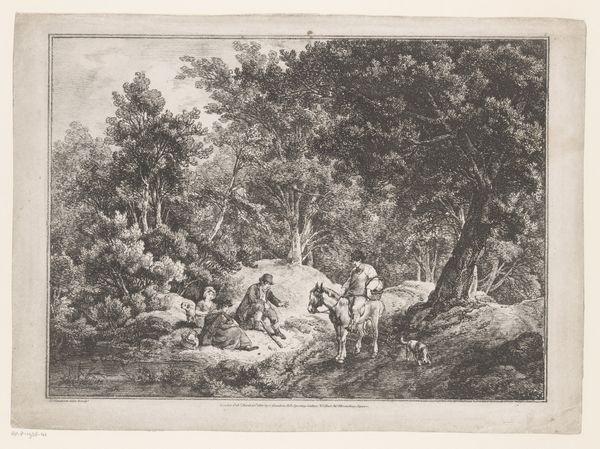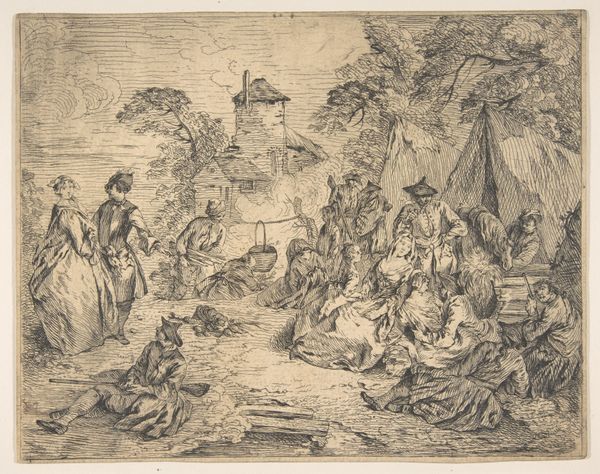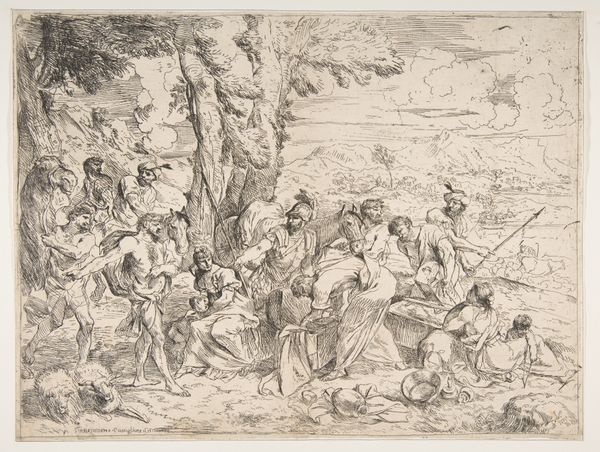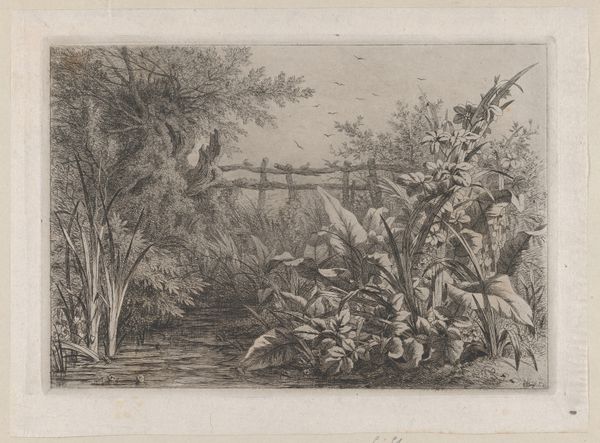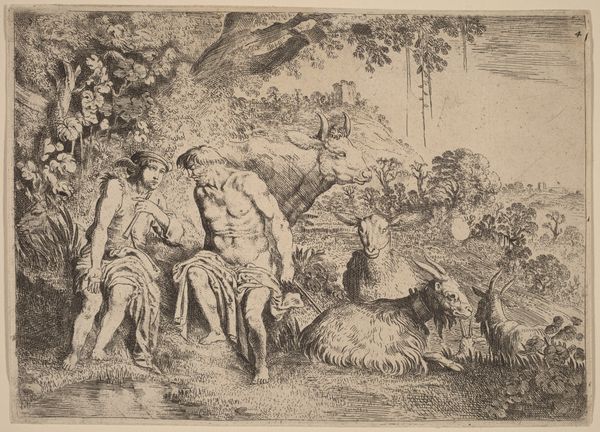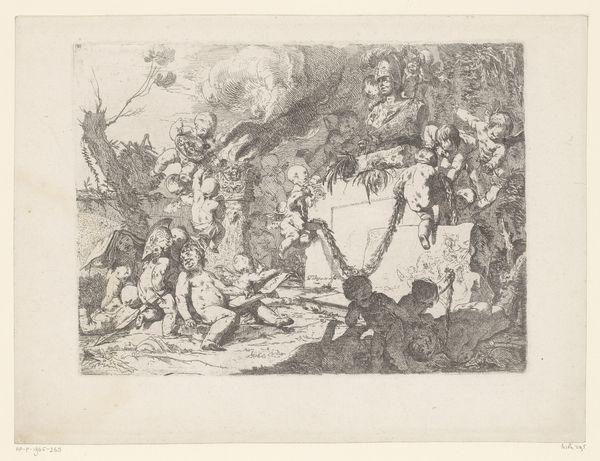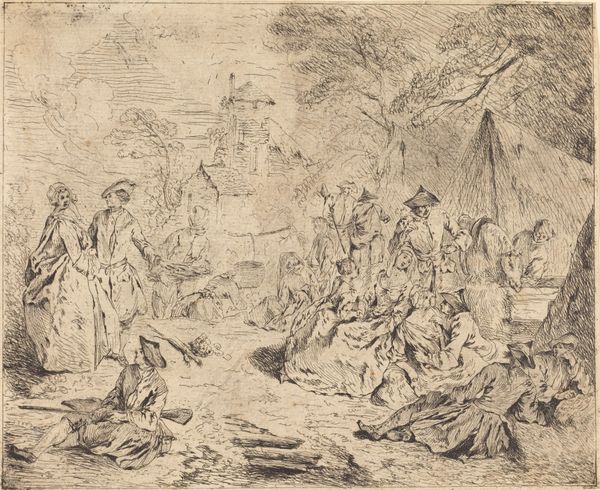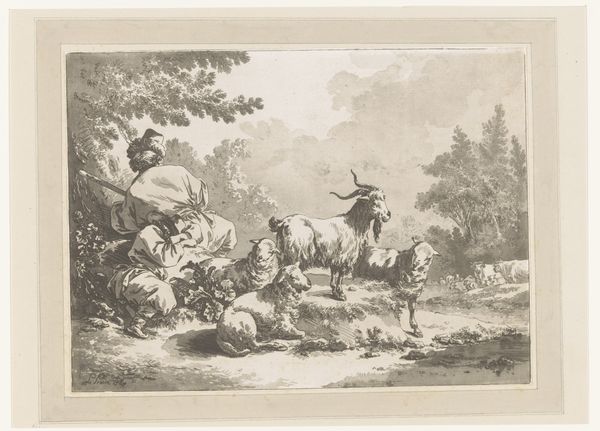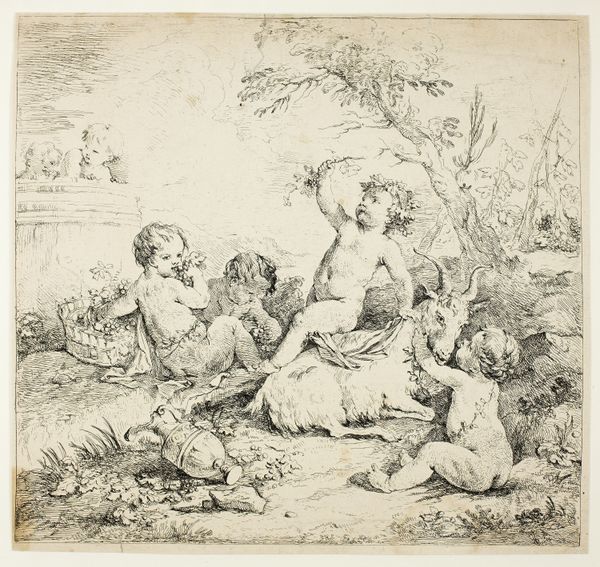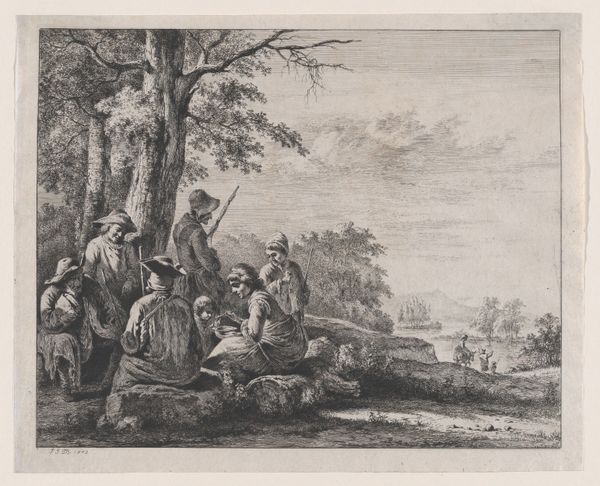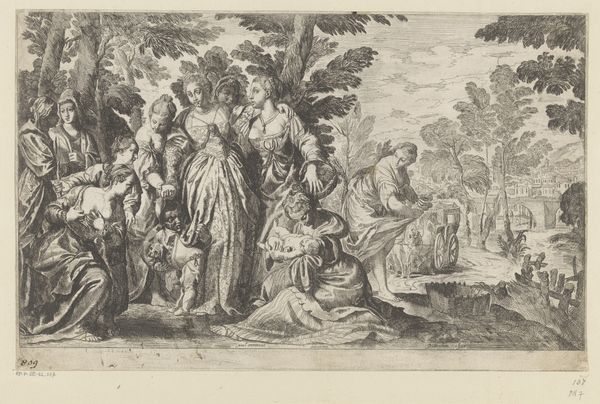
Dimensions: Sheet: 9 5/8 x 12 1/2 in. (24.4 x 31.8 cm)
Copyright: Public Domain
Editor: Here we have Jean Jacques Lagrenée’s "Sacrifice to Pan," an etching created around 1762 or 1763. The sheer amount of figures in the landscape really strikes me. What draws your eye when you look at it? Curator: The overall composition, of course. Note the balanced arrangement of figures – a relatively symmetrical organization. Lagrenée uses a strong central vertical axis to create a structured yet dynamic field. Observe the positioning of Pan's statue in the middle and the arrangement of people around it in contrast with the backdrop which leads the viewer into the scene, maintaining order and complexity. Editor: I see what you mean. It is almost theatrical with all of these characters and its division in planes, but how would you analyze Lagrenee's specific technique in it? Curator: Let us observe the artist's technical skill through a focus on form, line and balance. Notice the intricate detail of the foreground figures compared to the atmospheric rendering of the background elements, which indicates an academic understanding of depth and form. In addition, a structural assessment uncovers use of chiaroscuro via stark contrasts between light and shadow that bring visual focus to significant spots like Pan or main human interactions Editor: I’m starting to appreciate it in a new light. The technical aspects create this cohesive tableau. I will think of structural symmetry when viewing landscapes from now on. Curator: Indeed. Now we're able to think beyond representation to decipher the very formal elements that shape it.
Comments
No comments
Be the first to comment and join the conversation on the ultimate creative platform.
